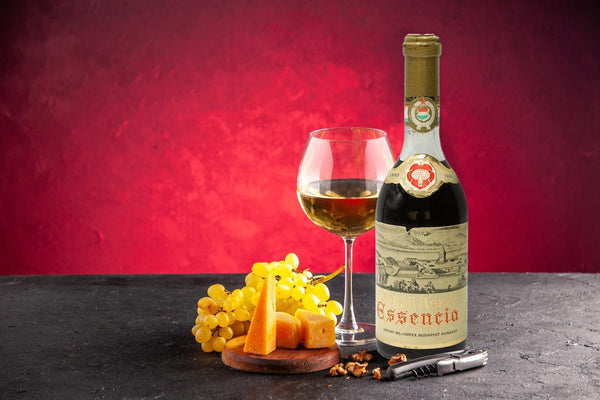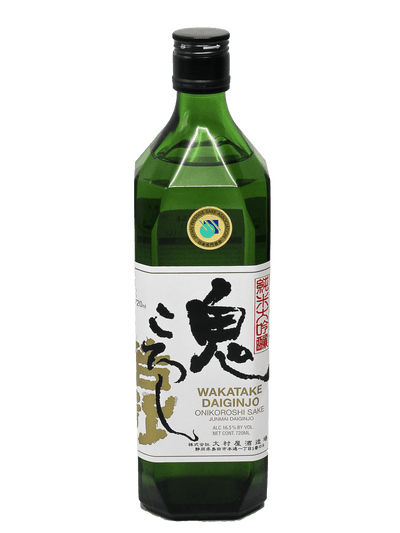A Unique Hungarian Wine: Tokaji

Tokaji was the first sweet wine made from grapes that had suffered from Botrytis cinerea or "noble rot" nearly four hundred years ago, more than a century before similar Rhine wines, and two hundred years before Sauternes began production in France.
Where is Tokaji From?
The Tokaj vineyards cover a narrow strip of land that stretches over the southeastern and southwestern slopes of the Zemplén mountains. These locations, suitable for the cultivation of first and second class grapes, exceeded 17,000 acres, of which no more than 12500 acres are cultivated today. There are 28 enclaves within a triangle of three mountains, Sator Hill in Sátoraljaújhely, Sator Hill in Abaújszántó and Kopasz Hill in Tokaj, both of which belong to the most famous wine region in Hungary.
What Makes Tokaji so Special?
Why should you buy this wine online? The exceptional properties of Tokaj wine are attributable to a host of extraordinary factors.
The volcanic subsoil (clay, loess), the sunny south-facing slopes and the microclimate determined by the Tisza and Bodrog rivers are the factors that make the region famous all over the world. They provide an extremely beneficial environment for Botrytis cinerea (noble rot) to thrive and cause grapes to desiccate, concentrating and intensifying both sugar and flavor. The wines are aged in a vast network of cellars, dug into the rock, offering ideal conditions (12°C temperature and 95% humidity).
The region's unique geographic potential is a result of the Tokaj region being on the border and affected by two distinct geographic zones. The Great Hungarian Plain and the Zemplén Mountains (Tokaj-Eperjes Mountains) meet there. Kopasz Hill itself is a volcanic cone of the Zemplén Range and rises 514 meters above the small northeastern regions of the Great Plain (Bodrogköz, Taktaköz, Nyírség).
The various types of soil, which have a huge influence on the potential of the wine region, vary from town to town, from vineyard to vineyard. The soils of this volcanic region are varied, but there are three types that predominate: Nyirok (clay soil from the weathering of volcanic rocks), Yellow (formed from loess) and rock dust (formed from of silicified rock and pumice)
Tokaj's climate, like that of the Great Plain, is continental with wide fluctuation in temperature. At the foot of the mountain, the average annual temperature is 10.9 ºC, 21 ºC in July and -3 ºC in January. On the slopes the average annual temperature is higher by half a degree, however, winter is a little colder. The average annual temperature is 13ºC; generally with a long, sunny summer and a dry, sunny autumn. These conditions make the grapes ripen fully and reliably. The average annual precipitation over the last 90 years is 591 mm, due to the proximity of the Great Plain.
These southern areas open up to a sunny plain, which prevents freezing and its rivers and swamps keep the humidity high. The landscape is very beautiful in the early mornings in autumn: this fog keeps botrytis cinerea (which causes grape botrytis) alive.
The best vineyards are located on the southern slopes, where they are protected from northerly and westerly winds by vegetation-covered peaks.
Another special geographical feature results from the fact that the Bodrog River meets the Tisza River at the foot of Kopasz Hill. The confluence of the two rivers and the mosaic-like pattern of flora form an exceptional landscape and habitat of backwaters, swamps, riparian forests, and meadows.
The vegetation of the land is also exceptional. The elements that alter the flora of the mountain and the plain create a unique pattern. From the geobotanical point of view, the area belongs to the Tokajense district of the North Mountain region (Matricum) within the province of Pannonian flora (pannonicum). A large number of protected plant species live in the area.
How is Tokaji Wine Made?
As in Sauternes, which you will also find in the wine store, the harvest in this area is carried out in different passes, but instead of selecting grain by grain, the selection is made by bunches, as late as possible, practically at the beginning of winter, before the first frosts. Then vintners proceed to the manual separation of the botrytised grapes, separating them into containers called Puttonyos. The Puttonyos are the quantity in baskets per barrel of 136 liters of wine.
The normal grapes are vinified, later during fermentation the "raisins" grapes are added, and the wine obtained is Tokaji.
Appellation of Origin
Tokaji wines have a great reputation and history, which, unfortunately, has led to abuse of the Tokaji name. When you go to buy white wine, be sure of where the Tokaji originated. This abuse of the appellation name has generated several lawsuits; In the French region of Alsace, wines based on the Pinot Gris variety were called tokay d'Alsace. In Italy, varietal wine is made from the Friulian tocai grape, which is unrelated to those produced in Tokaj. According to the accession treaty of the European Union, Hungary has, as of March 31, 2007, the exclusive rights of the Tokaj appellation of origin within the Union. The name Tokaji thus obtained the status of Protected Designation of Origin, with which French and Italian producers cannot use, since March 2007, the name Tokay or Tocai.
However, there has also been a long dispute between Hungary and Czechoslovakia, (Slovakia since 1993), over the right to the wine region which is also part of their territory.
Negotiations between the two governments led to an agreement in June 2004. With this agreement, wine produced on 5.65 square kilometers of land in Slovakia can use the Tokaj name. However, a number of practical issues remain unresolved. Slovakia has been committed to introducing the same standards used in the Hungarian wine laws since 1990, but it has not yet been decided who will be in charge of monitoring compliance with these laws.
We hope you enjoyed learning about the qualities that make this Hungarian wine so special. Please read our other information-packed wine articles and leave us a comment below!


















Leave a comment